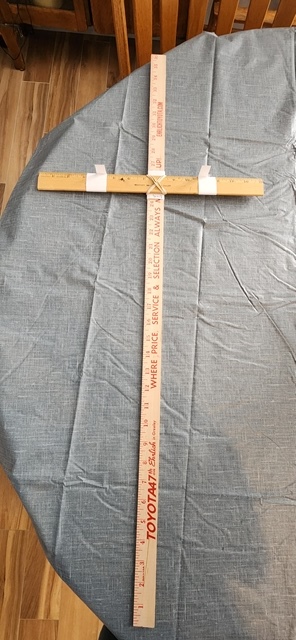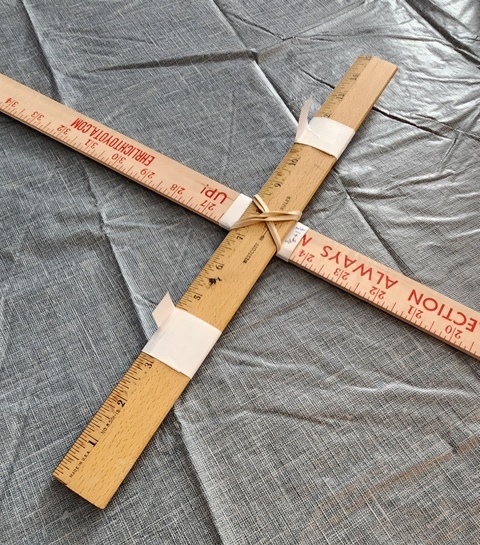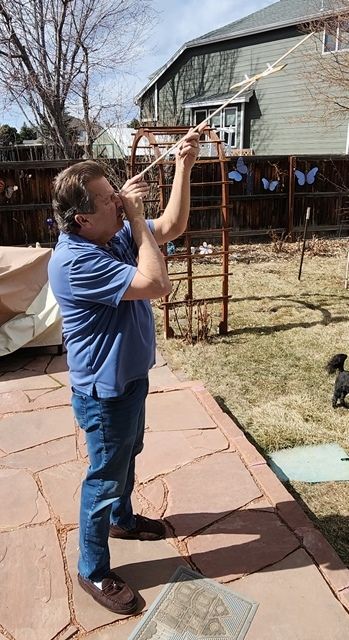An astrolabe or quadrant is good when measuring a single object. It is possible to measure the difference between things but it requires two readings, one for each object. A cross-staff (also called a Jacob's Staff because it was mentioned in the Bible) is designed to measure two things simultaneously.
It is a bit hard to locate directions and information on a cross-staff so try your hand at the one described at: https://pwg.gsfc.nasa.gov/stargaze/Scrostaf.htm
I built my own Jacob's Staff from a yard stick, 12-inch ruler, paper, tape and rubber bands.

I wrapped a piece of paper around the yard stick and put the rubber bands around the 12-inch rules and this piece of paper. This allowed the 12-inch ruler to easily slide up and down on the yard stick. The rubber bands provided enough tension that the 12-inch ruler stayed in place where it was stopped.
Out of another piece of paper, I made the alignment marks, seen on each side of the 12-inch ruler. Both these pieces were wrapped around the 12-inch ruler and taped. This allowed me to adjust the spacing between them. I kept each marker the same distance from the center of the yard stick. This made the math simplier to determine the angle separating whatever was being measured.
This is how I would use it in the dark. I held one end of the yard stick close to my eye. If I were measuring the separation of two stars, I would adjust the distance the 12-inch rule was from my eye. I found it very easy to have one star just disappear at the inside edge of the left marker and the other star just disappear at the inside edge of the right marker. If this was not the case, I made small adjustments of the distance the 12-inch rule was from my eye as needed.
Once both stars were at the inside edge of each marker, on my recording sheet I made for recording the separations of the required objects, I would put the distance, in inches, of the separation of the markers, and the distance from my eye to the front edge of the 12-inch ruler.
On another spreadsheet that had the trigonomic equations needed to determine the separation of the two objects, I entered the 12-inch rule reading (the Cross column heading in the results below) and the yard stick reading ( the Staff column heading in the results below). I looked up the actual separation of the items on the Internet, just for fun to see how close I came to the actual value.
Try using a cross-staff to measure the angle between:
1. Polaris and the horizon (your latitude)
2. the length of Orionís belt.My results.
I made sure my alignment marks were equidistant on the cross. I used a tape measure to then measure the distance between the marks on the cross and the distance from the front of the cross ruler to the bottom of the staff where my eye was.
You were standing on the ground when you used all three of the constructed instruments. Navigation at sea was a major concern during the time period these instruments were used. Finding the latitude was a daily chore. Imagine trying to do that on a moving sailing ship.
Using a Jacob's Staff on a ship at night would be difficult. If the sea was calm, you would have to do this at twilight when it is dark enough to see Polaris, yet light enough to see the surface of the sea in the distance. If the ship was in rougher water, this exercise would be very difficult and an approximation at best.


